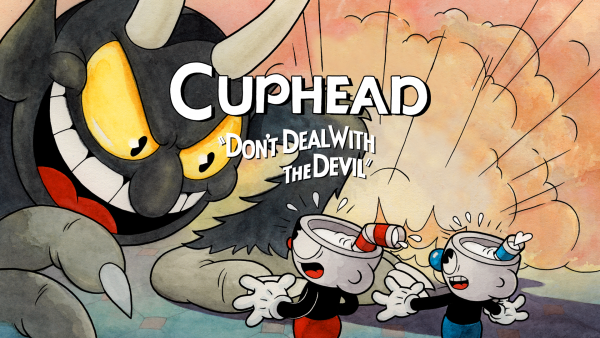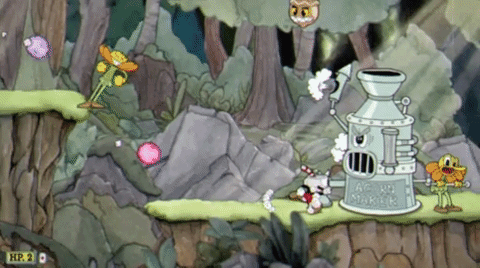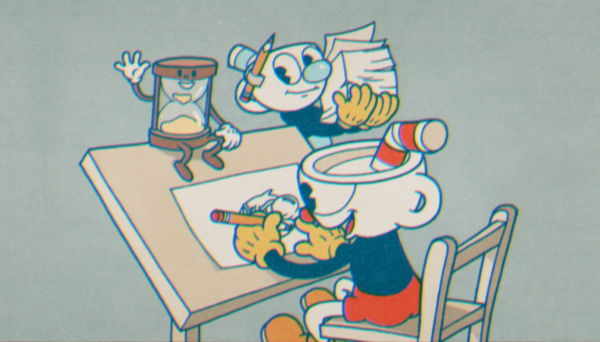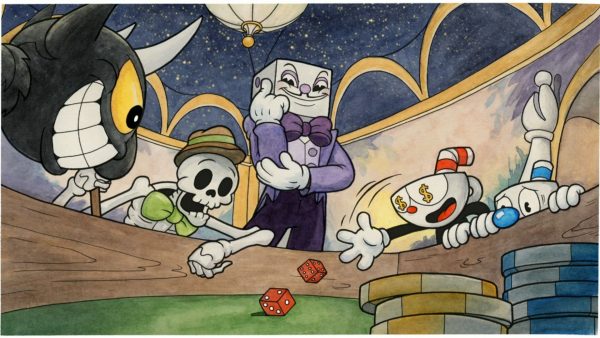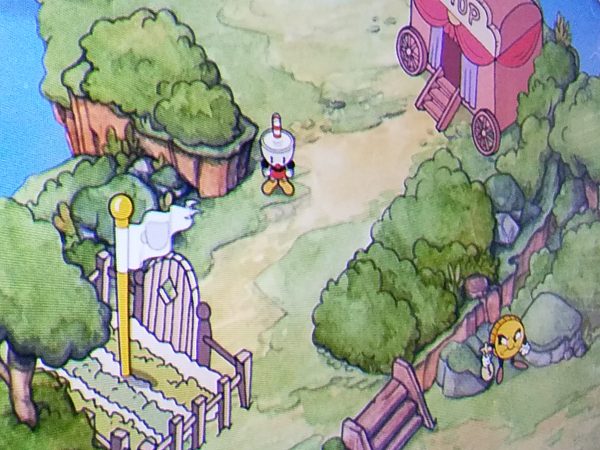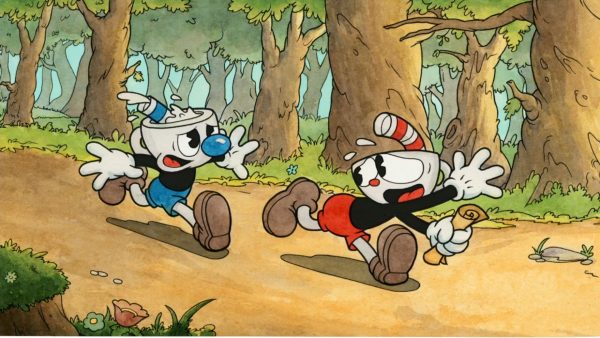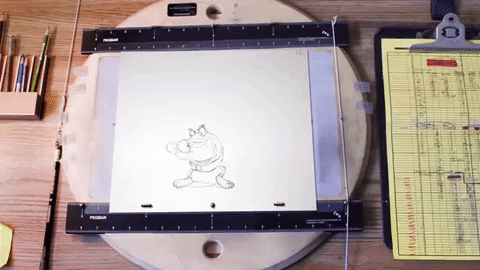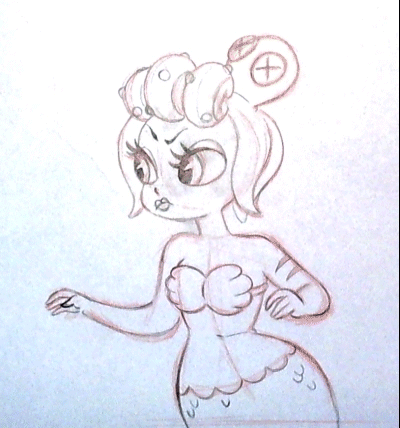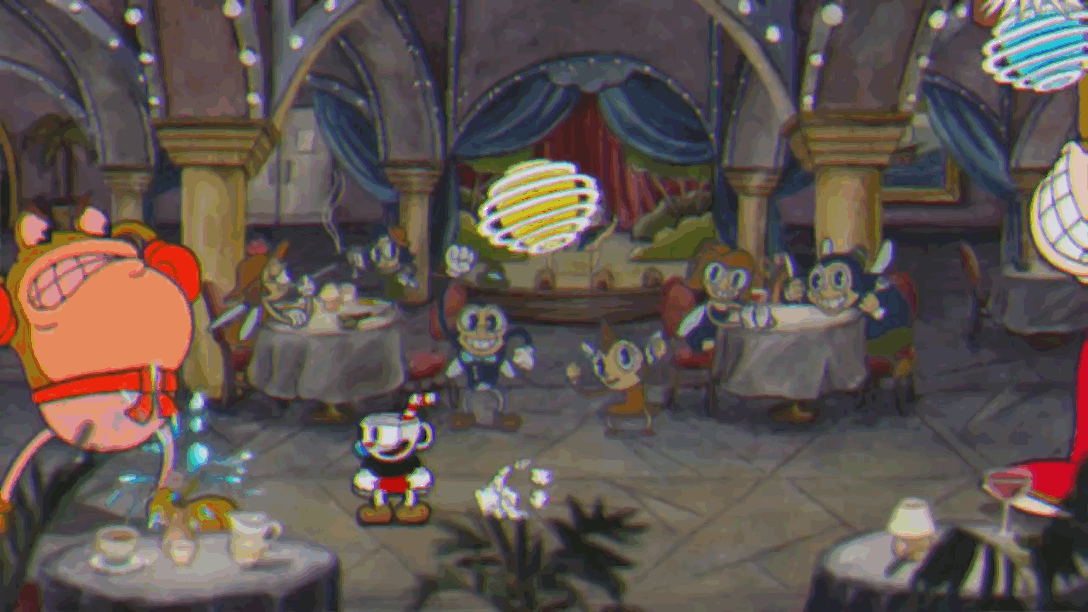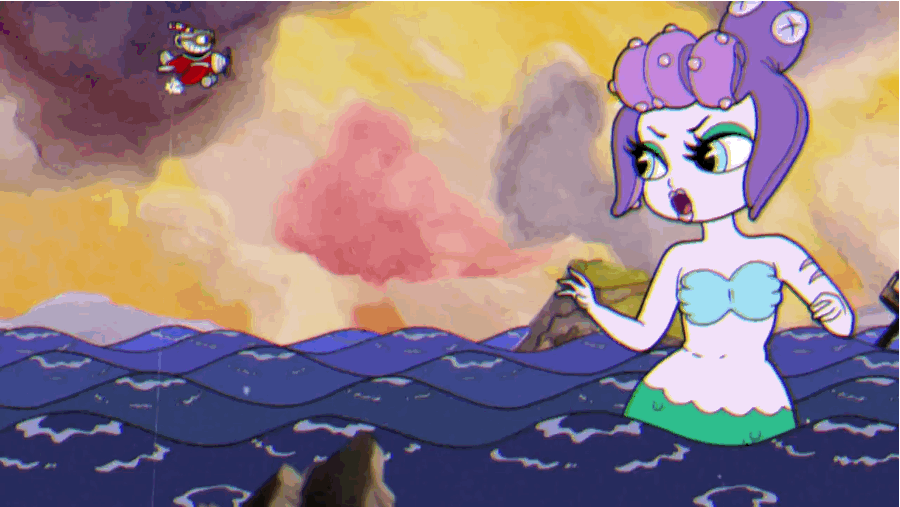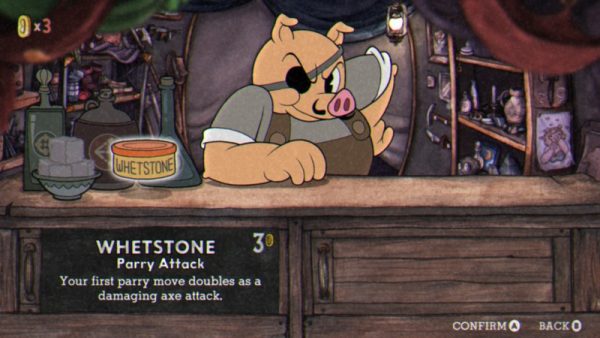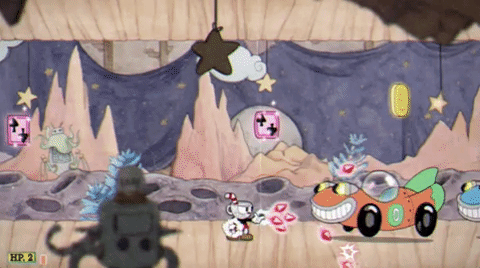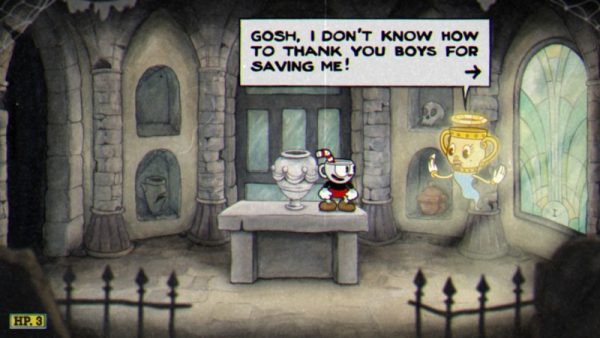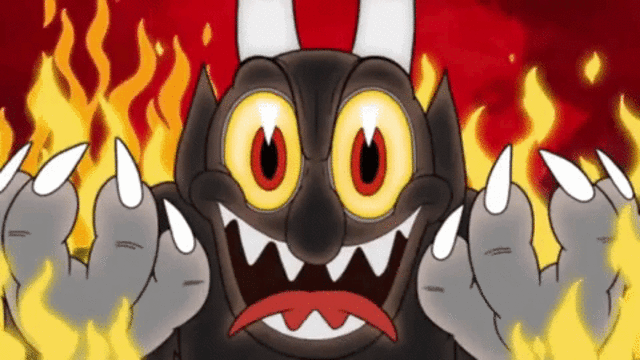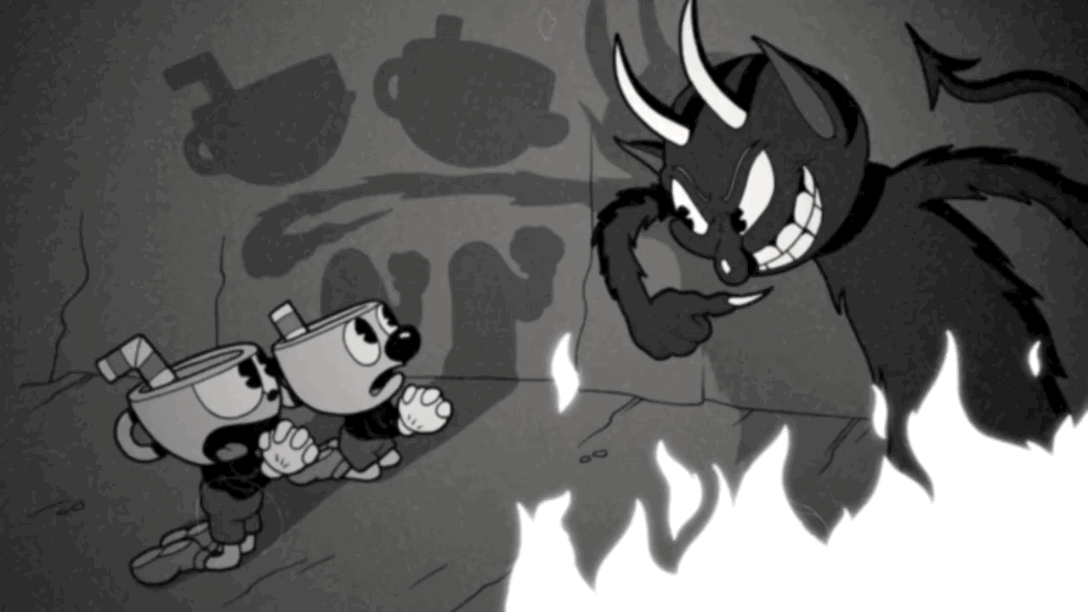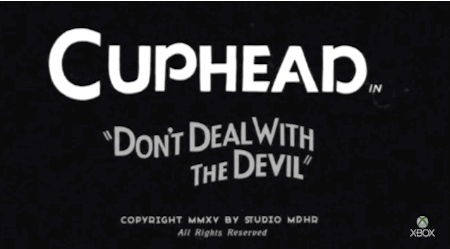Cuphead review
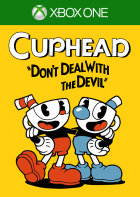

| Game Name: | Cuphead |
| Platforms: | Xbox One, Win |
| Publisher(s): | StudioMDHR Entertainment |
| Developer(s): | StudioMDHR Entertainment |
| Genre(s): | Run and gun, platform |
| Release Date: | September 29, 2017 |
| ESRB Rating: | E |
Cuphead is a true work of art. Hand-painted backdrops, frame-by-frame hand-drawn sprites, with some of the most imaginative, whimsical, and wacky boss battles ever seen in gaming.
Announced in the summer of 2014, Cuphead cultivated a fandom around its art style, an homage to 1930s cartoons from Disney and Fleischer Studios. Brothers Chad and Jared Moldenhauer, along with animator Jake Clark, meshed the hand-drawn art with the run-and-gun genre popularized by pixelated games like Mega Man and Contra. The result is a throwback on a throwback, an ode to the good old days of games and animation alike.
Cuphead shouldn’t be missed because of preconceptions about difficulty (barring, perhaps, the finale, which I’ll get to shortly). It borrows ideas from games like Ikaruga and Gunstar Heroes, but it’s fine if you aren’t familiar with either of those. While it’s a game about battling overpowered enemies, Cupheadshares more with puzzle games, although it requires healthy reflexes, patience and, above all, a willingness to learn.
Art, setting, and story
Brothers Chad Moldenhauer and Jared Moldenhauer and the rest of Studio MDHR hand-animated every backdrop, every sprite, and every special effect in tribute to classic cartoons of the early 1900s. The animation of that era was capricious and frankly, slightly unhinged, becoming unwittingly creepy in the process. Studio MDHR took this sentiment to another level, basing their entire visual structure on it to great effect.
Cuphead is the story of an adorable cup that makes a deal with the devil, then has to repay a debt by collecting the contracts of the devil’s other debtors. Satan’s debtors amount to a few dozen stand-alone boss fights, which must be completed so dear Cuphead can save his soul. You (and optionally, a friend in local co-op) travel from one boss to the next, unleashing infinite ammunition into their eyeballs, tummies, appendages or other vulnerable spots until they submit. All the while, you dodge increasingly complex patterns of attacks.
Cuphead is comprised of three main overworlds sporting different visual themes. Without going into too much detail, the first takes place in countryside lands, with forests and farms, while the second takes place in an amusement park, with rides and other attractions.
The creatures you’ll encounter are vaguely thematic for each world, but the endless surrealism makes almost every aspect of the game a constant surprise. A lady zeppelin riding a flying bike, transforming into a giant bull, then into a giant moon, spraying projectiles all over the place. A princess with a severed head, riding a living birthday cake, assaulting you with an army of living jelly beans, candy corn, and cupcakes. A battle a-top a roller coaster, against a clown that can transform into a giant balloon and a carousel, who spits baseball-throwing penguins, the imagination of the animators was truly endless.
CUPHEAD PUNISHES PRIDE AND SPEED
The average boss fight in Cuphead, from beginning to end, is roughly two minutes long; short enough to be tested over and over and over again. Fights are themselves divided into a few phases, and each phase introduces its own new set of challenges (such as a tall wave of bullets) that inspire tiny epiphanies (rather than jump over the bullets, duck). Strung together to complete a stage, these self-taught lessons produce a real sense of accomplishment.
Cuphead, at its best, educates the player on how to overcome each obstacle. Every boss fight has an ideal strategy discovered through trial and error. To avoid stress, it’s helpful to think of failure as a greater tool than any weapon. When a Medusa-like boss froze me in midair, I eventually found the spot to hide from her icy stare. After a ghastly horseman uppercutted me into oblivion, I knew to keep an eye on the bottom of the screen so I could spot him preparing a strike. With each round against a boss, I found myself progressing further, not because I was becoming some prodigious video game wizard, but because I merely spotted and memorized each stone on the walkway to victory.
Every single frame of Cuphead oozes ingenuity.
This really is the tip of an iceberg of absurd designs that will enthrall as much as they disturb, owing to that 1920s oddness. Less odd, however, is the game’s musical score, which features an incredible 56 tracks of original jazz and ragtime songs composed by Kristofer Maddigan and performed by live musicians. The authenticity elevates the experience as a whole and really typifies the attention to detail Studio MDHR have strived for when recreating the sights and sounds of the period.
Every single frame of Cuphead oozes ingenuity. I’ve died simply because I was distracted by the stunning displays on offer. Cuphead’s visuals are arresting, and they will ensnare your attention and soften the blow while you suffer through its aggressively punishing gameplay.
Gameplay – it’s as hard as you heardThe Gameplay – it’s not as hard as you heard it all depends on the player skill level
Supporting 2-player local co-op, Cuphead places up to two players in an overworld, hand-painted and full of peril. As you move from one boss to the next, the game’s island worlds open up to new areas, providing more activities.
You can play each event on a “simple” mode, which removes some of the trickier mechanics, dumbing the fights down and allowing you to progress. But if you want to truly complete the game, you’ll have to git gud and stick it out on regular mode – this is the only way to claim each boss’s soul for your fiendish benefactor.
Each boss battle comes with multiple phases that must be learned via trial and error, If you survive each phase, you’ll win, receive the soul, and also be graded on your performance. There are achievements attached to the grades and even 200g for completing the game without dying. That’s one achievement that almost nobody will ever get.
The vast majority of Cuphead deaths will be due to trial and error. Sometimes it’s not clear whether something is a projectile or a safe platform, and the only way to find out is to risk a hitpoint on it. You get three hits per level, then it’s game over and time to restart the mission.
There’s also an element of randomness in most boss battles, which serve to make repeat attempts feel fresh, but at the same time, on some of the more chaotic bosses, the RNG stars can align to place you in inescapable situations, which can be frustrating.
The best offense
Parrying — hopping into attacks, then bouncing off them at the last moment — is a crucial and relatively forgiving mechanic in Cuphead, not requiring the superhuman timing of fighting games that feature a similar move. In some ways, I enjoyed the parrying system more than Cuphead’s various attacks. Only pink objects can be parried, and they change between levels, often blending into the scene. In one stage, they are dice skittering across a casino craps table; in another, they’re tears raining from a ghoulish pair of eyes.
Finding the parry-able objects can become a game of recon, sending Cuphead into a fight not to win, but to spot the path to victory for a rematch.
The game gives you options to limit the impact of chance, however. There’s a special store on each world that gives you access to buy power-ups and additional weapons. One of the weapons you can buy is a short-range spread shot trading range for additional damage. This extra option gives you the ability to speed through certain boss phases a little faster, reducing the risk of something going horribly wrong.
Weapon loadouts and buffs can be purchased with coins hidden throughout a handful of platforming stages. To be clear, Cuphead isn’t a platformer. A few side-scrolling moments have been added for flavor, but where boss fights teach players the unique method with which to clear each fight, these traditional stages are largely completed through brute force, killing everything on screen, pressing forward until the finish line. Classic video game boss fights have fallen out of favor in the past couple of decades, and one wonders if these bits of platforming were added to ground intimidated players in something more familiar. There are also mausoleum challenges that give you access to powerful “super” ability, such as temporary invincibility and a large horizontal beam. The supers charge up over time, represented as playing cards in the bottom left-hand corner of the HUD. You can spend single cards on a mini-attack, or build them all up for a super, which does far more damage. Managing these abilities and powerups forms part of the game’s difficulty – knowing how and when to use those abilities without getting yourself killed in the process is an important skill.
Where Cuphead scolds speed, it rewards a careful and thoughtful method. Anytime the challenge feels too great, a solution can typically be found by inhaling, exhaling and carefully considering all possible solutions before diving back into the fight.
Cuphead unlocks new weapons and abilities rapidly, allowing for further experimentation in pursuit of the optimal way to beat any given boss. In a fight, Cuphead can carry two weapons, a bonus power and a special attack at all times. A thoughtful loadout can impact the difficulty of a stage. For example, a stage with swarms of enemies benefits from a powerful short-range attack, a buff that automatically accumulates special attacks and a screen-clearing super move. Meanwhile, a humongous boss who fires large projectiles calls for homing bullets, a buff that prevents damage while dodging and a special move that grants brief invincibility.
CUPHEAD’S FINAL BOSS FIGHTS UNDERMINE THE GAME’S BEST TRAITS
Sadly, there’s no better reminder of why video games have largely scrapped the classic boss fight than the final two battles in Cuphead. The first is a gauntlet of bosses, between three and nine, along with a bonus boss. And the final … well, I won’t go into details, but it felt like a battle with the game itself.
Cuphead has an astonishing cohesion: a stunning orchestral soundtrack and visual confidence that reminds me of my favorite Ub Iwerks cartoons. But on occasion, those elements get in the way — particularly the art, which can obscure the foreground, concealing enemies and projectiles. Sometimes the part of an enemy that can be touched without taking damage is unclear. The final fights combine both of these problems, and what should feel like a culmination of a learned expertise winds up requiring a mastery of the game’s idiosyncrasies — with help from luck.
The conclusion of Cuphead is, I fear, what the game has broadly been perceived as: a comically difficult, if not cruel, experience. And that’s really a shame, because the lion’s share of Cuphead is a special formula that takes a notoriously challenging genre of the past and carefully and lovingly introduces it to the wider audience it deserves.
Cuphead is a tremendous achievement that will probably go down as one of this year’s most beautiful and creative titles. Each level, each song, and each boss character is a meticulously crafted work of art in its own right, that you won’t soon forget.
The gunplay mechanics might feel a little dated, paying homage to 8-bit shooters of yesteryear, but they’re well executed overall, and come with some modern flair in the form of super attacks and other powerups.
The randomness on some boss fights will frustrate some, but patient, methodical gamers will relish the challenge, and enjoy the sense of accomplishment at the end of each huge battle.
Don’t make a deal with the Devil
Cuphead’s deal with the devil eventually leads to hell, and so perhaps it’s fitting the conclusion should be so torturous. Though, honestly, even the residual headache has been soothed by the sweet, sweet salve of victory. When I think of my time with Cuphead, instead of frustration I’ll remember the dozens of tiny breakthroughs, when the impossible became possible, and a game that built an identity around difficulty helped me to feel, however briefly, undefeatable.



